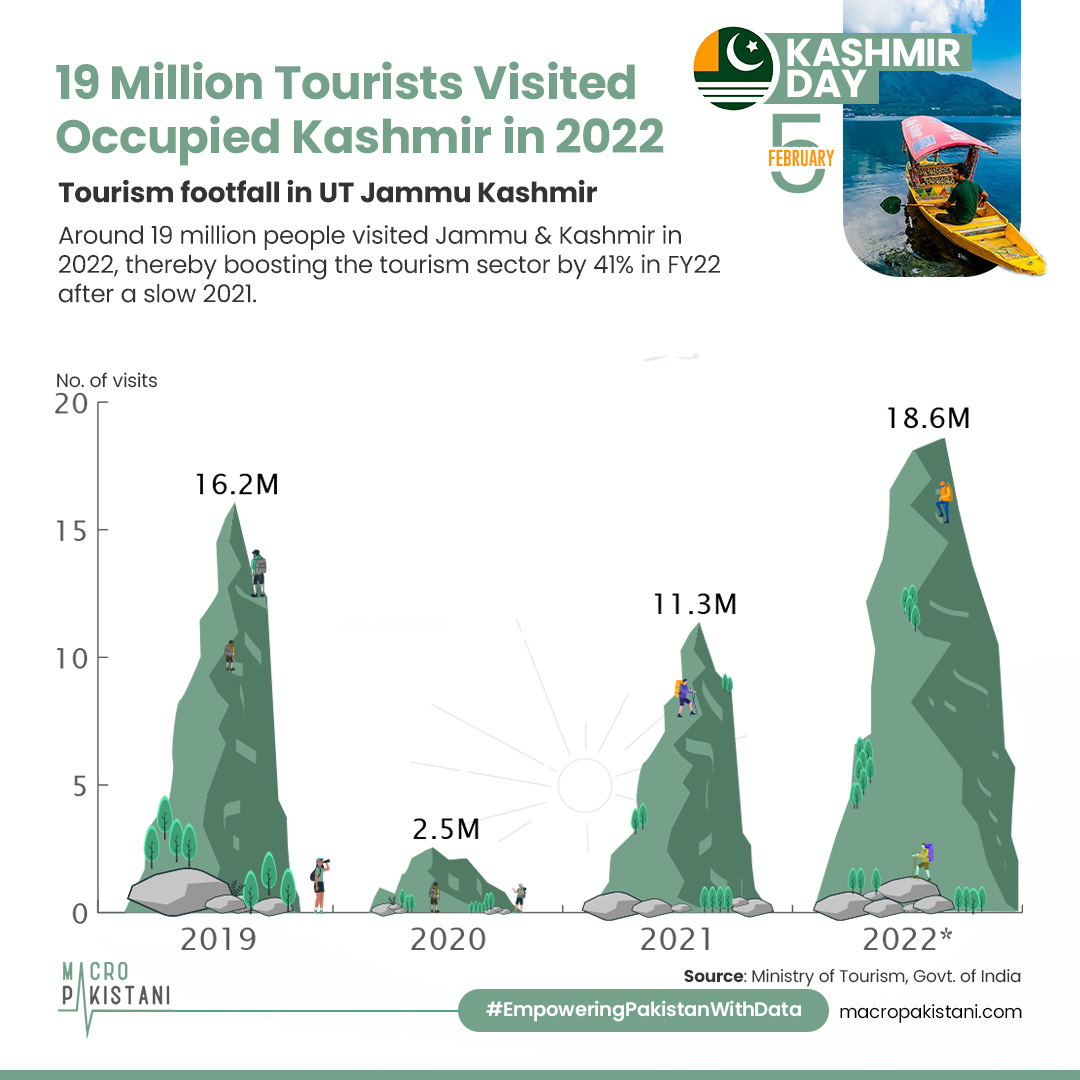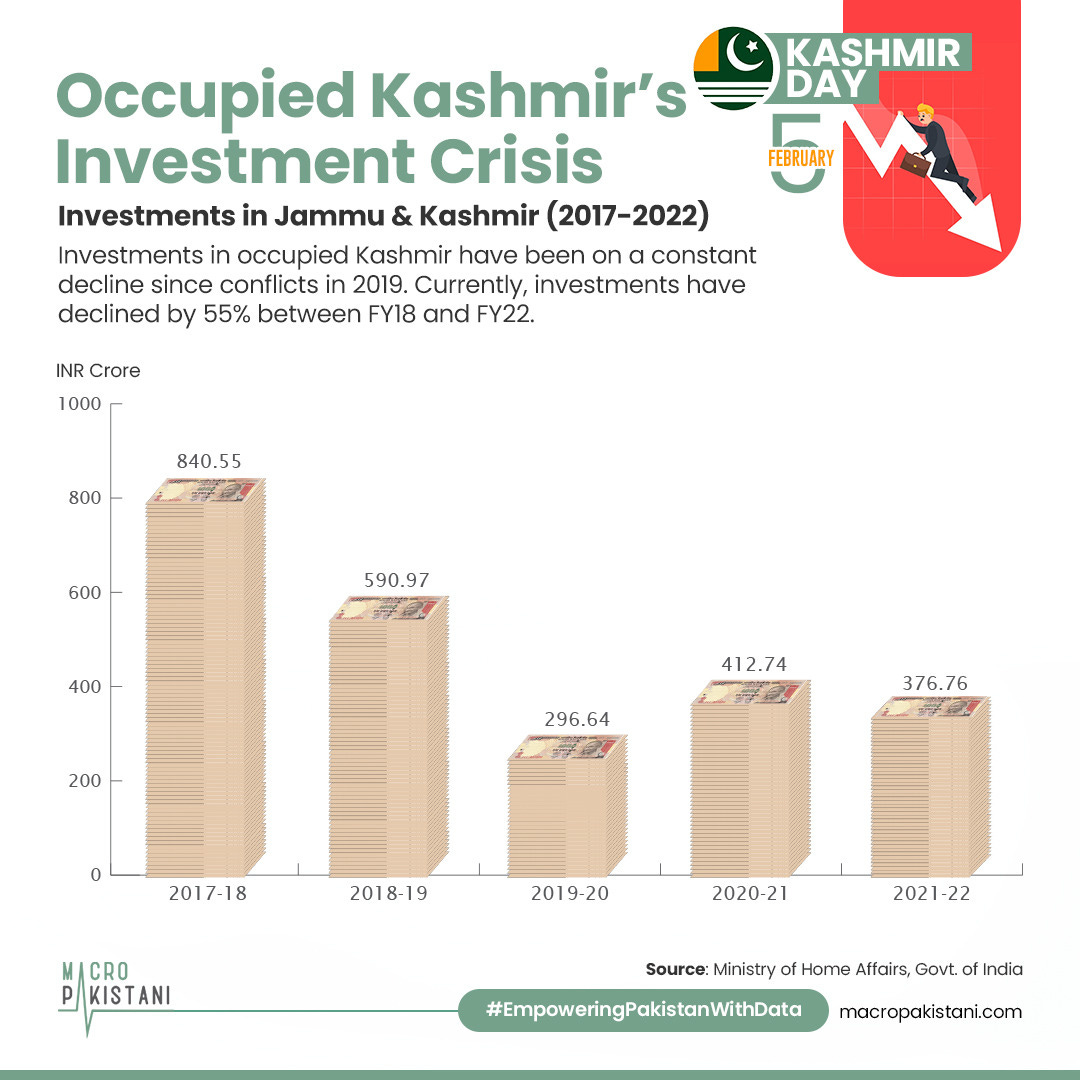Kashmir Solidarity Day 🇵🇰🕊️
The imposition of a new constitution on the people of Kashmir, and threats to their autonomy have multidimensional impacts.

Since the Jammu and Kashmir Reorganisation Act, 2019 in October 2019, the Indian government has increased its involvement in the economy of Kashmir, although causing more harm than good.
As we commemorate Kashmir Day for the 34th time let us have a look at three major aspects of Kashmir’s economy after the abrogation of Article 370 of the Indian constitution. These issues range from the impacts of the burgeoning tourism sector and declining agriculture on the environment to the declining state of social development in the region, affecting Kashmir’s youth population.
The imposition of a new constitution on the people of Kashmir, and threats to their autonomy have multidimensional impacts. From environmental damages due to unregulated development to the declining social development in the region, India’s role in Kashmir is increasing. Furthermore, smart settlements in the region through real estate efforts are damaging to the social fabric.
It is high time that we take the Kashmir cause seriously and ensure that the region achieves autonomy over its decisions. In the end, all nations are entitled to the right of self-determination.
The Emerging Tourism Landscape in Occupied Kashmir
After the G-20 summit held in Occupied Kashmir, the area’s tourism industry has observed a boost in footfall. India is planning on supporting religious tourism in the region as it marked 75 new destinations last year. By exploiting the region’s economic value and harming the ecology India aims to earn significant foreign earnings.
Seeds of Concern for Agriculture in Occupied Kashmir
According to the Jammu & Kashmir economic survey, 70% of the region’s population relies on agriculture to generate income. Yet Occupied Kashmir’s agriculture productivity for wheat and rice has been on the decline since 2019 which can be observed by the yield per hectare. The same figure has been stable for India, raising concerns about the efforts to support farmers and the region’s indigeneity.
Triple Threat; Investment, Employment & Education
The unemployment rate in Occupied Kashmir was recorded at 18.3% among people aged 15 years to 29 years. Furthermore, Jammu and Kashmir has the highest primary drop-out rate among major Indian states. Constant disenfranchisement of Kashmiri youth has resulted in a dismal state of affairs in terms of education and employment. The impacts of such neglect are multigenerational and affect the well-being of Kashmir’s youth.
Data Visualization & Marketing Partner: Brand Nib
Visit: https://macropakistani.com/advertise/
Grateful for the ever-growing list of collaborators!
About Us: Macro Pakistani is a data-driven research platform that aims to provide a basic understanding of Pakistan’s economy. If you have an interest in contemporary news but are currently overburdened with sensationalism and specialized vocabulary, we are the platform for you.
How are we doing? Please send us any questions, comments or suggestions by replying to this email.





